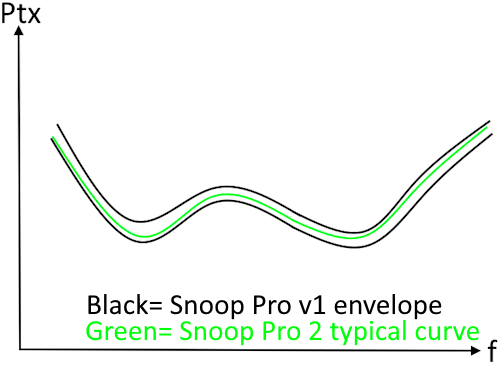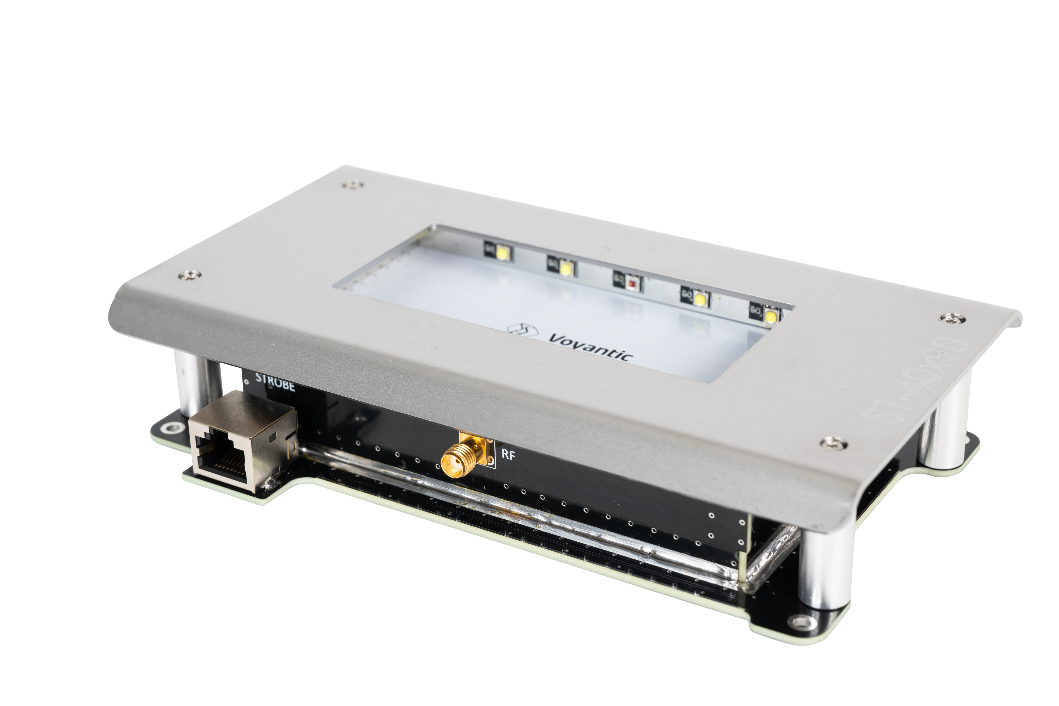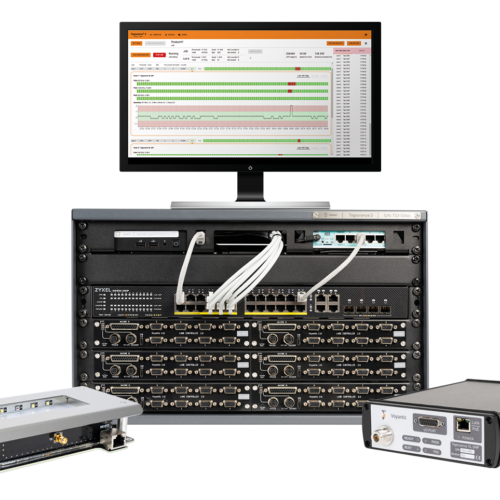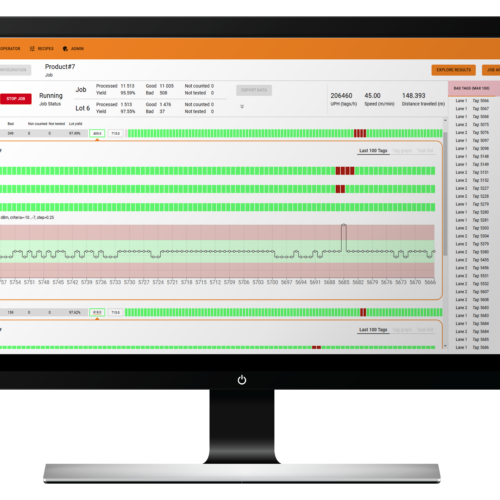We continuously seek to improve our products to answer your needs, like making your job easier with user-friendly test systems or improving testing quality. This time, we made some nice improvements to Snoop Pro, one of the components used in the Tagsurance 3 system. The Snoop Pro 2.0 has:
- Improved unit-to-unit RF performance variance
- Integrated strobe feature
- Smaller size and better usability
The improvements were made with backward compatibility in mind to make Snoop Pro 2.0 almost a drop-in replacement for Snoop Pro 1.x, which means:
- RF backward compatibility: when testing tags/inlays, the test results with Snoop Pro 2.0 are within the test results variance of Snoop Pro 1.x
- Mechanical backward compatibility: Snoop Pro 2.0 has the machine integration attachment holes at the same positions as Snoop Pro 1.x, and also the same shielding plates can be used
Let’s check it out.
Improved RF performance variation with RF backward compatibility
I’m starting with the RF performance because I just love RF. A nice new feature for the Snoop Pro 2.0 is the improved variance, making the produced units more uniform in RF performance. This means that if you test one tag with multiple different Snoop Pro 2.0, the results are very similar.

Why is this so nice? I’m so glad I asked. It’s nice because if you want to use identical recipes for different production lines or even factories, the Snoop variance does not prevent doing that. So, better testing quality for your products. However, keep in mind that Snoop is only one of the components in the system; other things, such as the environment near the Snoop or cabling, might still have too much effect.
One of the most important requirements was the RF backwards compatibility so one can replace a Snoop Pro 1.x with the Snoop Pro 2.0 and be done with it. Our definition of RF backwards compatibility is as follows:
- With the Snoop Pro 2.0, measured results are within the variance of Snoop Pro 1.x results OR within ±1.0 dB from the center of the Snoop Pro 1.x result envelope average
The difficult part is that the Snoop is always used with a tag/inlay on top of it and together they form a complex structure where every part plays a role. Since all tags/inlays are different and are affecting the Snoop differently, an excessive amount of measurements was performed to make sure we have covered most of the imaginable situations. Especially large tag models couple with the Snoop strongly and have an effect on the performance. Bah, physics and its precious laws.
Voyantic offers different kind of extensions for Snoops and those are compatible with the Snoop Pro 2.0. However, for the extensions there is no backwards compatibility in RF performance even though the results are close.
Integrated strobe feature
The Snoop Pro 2.0 has a built-in strobe functionality that can be turned on/off with a switch. White LEDs illuminate the trigger position (the moment when the testing/encoding starts), and red LEDs show tags/inlays that are failing the tests.
With the strobe light coming from below the material under test, the strobe is more effective than when the light comes from above. In a Tagsurance 3 system, the Snoop strobe shares a station connector with a TSU, so there’s no need to configure a new station to get it working. The Snoop Pro 2.0 can also be used without connecting the strobe cable; it does not affect the RF performance. The new RJ45 connector was added for the strobe functionality (don’t be fooled by the connector; no ethernet traffic there).
New size, looks, and usability
The Snoop Pro 2.0 no longer wears green; it now has a black-and-white appearance and a slightly reduced size. The new color was picked because of the integrated strobe functionality; white reflects the most light, which is essential for the strobe.

With a careful redesign, we could replace the large external RF splitter and the two blue RF cables, making the size of the Snoop more compact. This helps a bit when trying to fit many Snoops in a multilane system where the space is limited.
The magnets were also renewed so less force is needed to change the shielding plate and you don’t not accidentally rip off the copper gaskets during the changing. Less hassle is always nice.
Conclusion
With the backwards compatibility, you can easily integrate the new Snoop Pro 2.0 to your testing systems. With the strobe integrated into the Snoop it is easy to use and doesn’t require additional configuration in the Tagsurance 3 recipe. The improved unit-to-unit variance allows you to more easily use identical recipes between lanes. All with the new Snoop Pro 2.0.
All blog posts


